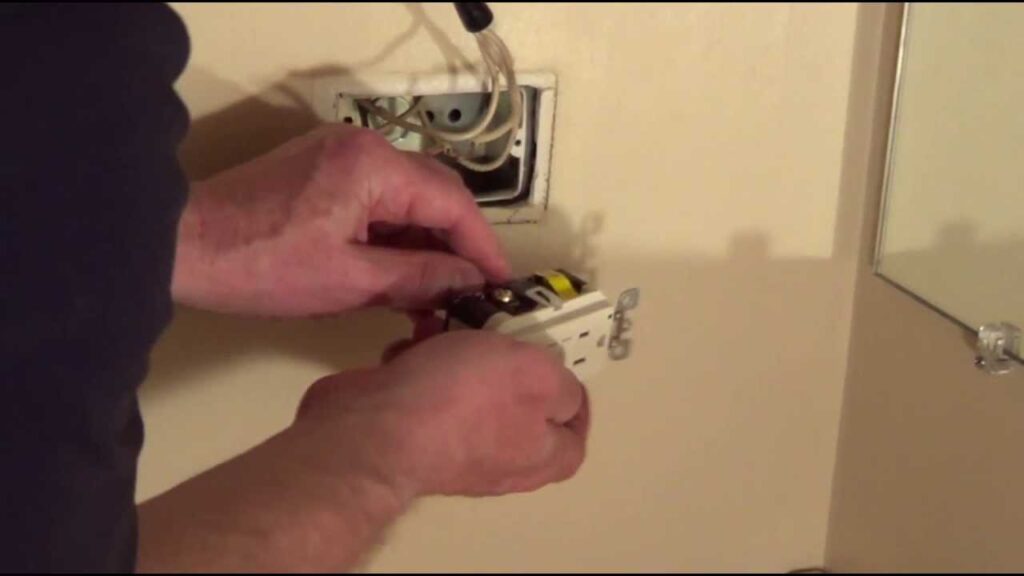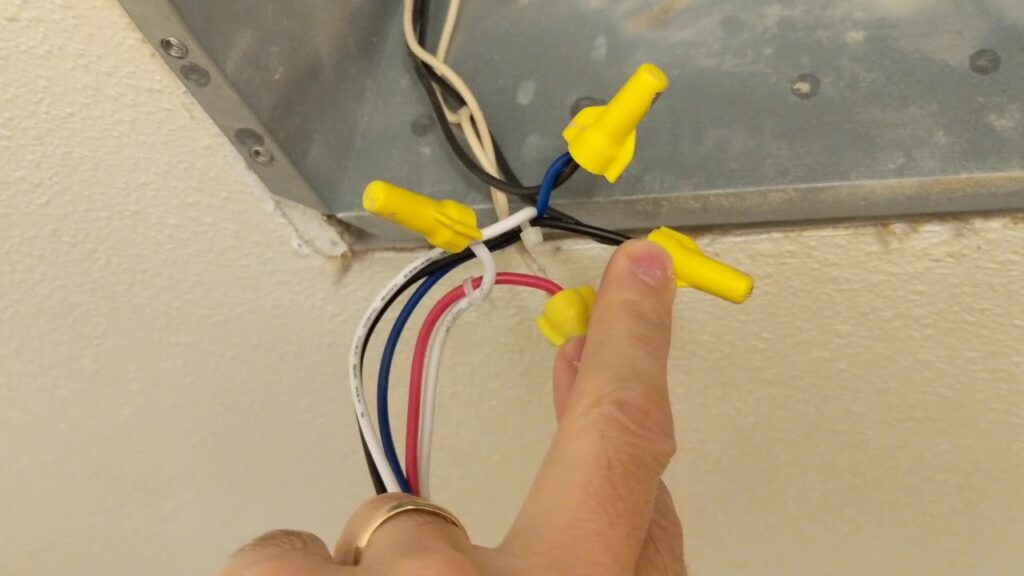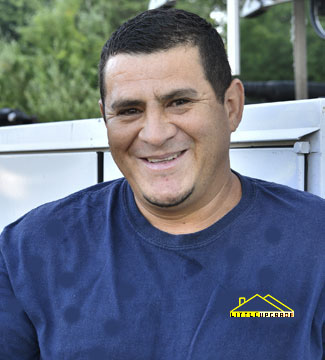Yes, two bathrooms can be on the same circuit, but it is highly discouraged due to potential danger. If your bathroom appliance amp requirement is equal to or lower than the circuit capacity, then you can connect two bathrooms on the same circuit.
And using heavy appliances without dedicated circuits is out of the question. A few years back, I was using iron in one bathroom, and my wife was using a heated rack at the same time, and the circuit tripped because it was a 20-amp circuit and couldn’t take the load.
I will explain everything in the later section in detail. Let’s get into it!

Quick Jump
Do Bathrooms Require a Separate Circuit?
Generally, yes, bathrooms do require a separate circuit. It is crucial to understand why you need to set up separate circuits for each bathroom to understand if you can connect two bathrooms on the same circuit. I will go through each reason briefly to give you an overall idea.
Reason #1 (Safety): As you can realize, bathrooms are unique in that they’re considered “wet” areas due to sinks, showers, and the potential for splashes. To ensure your safety, many electrical codes now require Ground Fault Circuit Interrupters (GFCIs) in bathrooms, working as a safety net and instantly cutting power if there’s any hint of a short circuit.
Reason #2 (Convenience): My wife was using blow-drying her hair while I tried using an electric razor. And the bathrooms were connected to the same circuit. Guess what happened? Yes, you guessed right, and we made a mess out of it. If all of these appliances share one circuit, you might run into trouble. Hairdryers, curling irons, and other gadgets can be energy hogs.
Reason #3 (Prevent Overloading): The modern bathroom isn’t just for brushing teeth. Just like everyone nowadays, we’ve got hairdryers, straighteners, heated towel racks, and more. All these gadgets can gobble up some power. Having a dedicated bathroom circuit ensures that you can run these devices without overloading the circuit and tripping breakers, as you can imagine.
Besides, your area has its electrical code compliance. Local electrical codes often require a separate circuit for bathrooms. It’s not just for fun; it’s to ensure your safety and that of your home.
And I understand your confusion. I will try to clear them in the following few sections. Even if there are any other topics that you need to know, the best way to figure out your specific bathroom electrical needs is to bring in a qualified electrician.
5 Crucial Electrical Code Requirements for Bathrooms

Even if you don’t fix or work with the electronics and things, it is absolutely crucial to have an overall idea about electrical code requirements for bathrooms. As per the data, a significant number of accidents occur in bathrooms because of power source or electrical issues, and they don’t meet the minimum code compliance.
That’s why you remember to have the basic code and maintain it while setting up the circuit.
GFCI Outlets: Yes, I already hinted at this crucial factor in the previous section. GFCI outlets are non-negotiable in bathrooms to have. Wherever you live in the USA, your local area code mandates that every bathroom outlet must be GFCI-protected. So, if your bathroom outlets aren’t GFCI-equipped, it’s time for an upgrade.
Heavy Appliance Rule: High-power appliances like space heaters and hairdryers should have their dedicated circuits, let alone connected to a combined circuit. The code insists on this to prevent overloading your bathroom circuit. So, when you’re setting up your bathroom, make sure there’s a dedicated circuit for these power-hungry tools.
Placement: I didn’t know this either, but there’s a rule about outlet placement, too. You need to place the outlets at least 36 inches away from the edge of a sink or basin. As you can guess, water and electricity don’t mix well, and this keeps your electrical outlets at a safe distance from splashes and moisture.
Wiring: Don’t make mistakes in this section, as well as the electrical code specifies the wire size you should use. For bathroom circuits, it’s often recommended to use 12-gauge wire for 20-amp circuits. As a result, it ensures that the wiring can handle the current without overheating or causing problems.
Ventilation: We all have those bathroom exhaust fans that help clear out the steam and odors. As far as I know, your fan needs a dedicated 20-amp circuit for the bathroom’s exhaust fan, lights, and heater if you have one, and it helps ensure that the fan works efficiently and can be controlled independently of the bathroom lights.
Yes, there are a few other rules, too, but these are absolutely crucial to maintain. Don’t forget these!
Different Bathroom Circuits and Amp Requirements

As you already might know, depending on your appliances, you need to set your bathroom circuits. So, if you want to determine, you need to know which type of circuit is in your bathroom, calculate the total amp requirement for your appliances, and if they will run smoothly.
To do that, you need to check which type of circuit you already have, or you need to set up. After that, you need to calculate the total appliance and amp requirement of those and ensure that the circuit can take that much load or not.
If it can, you can connect two bathrooms on the same circuit. Let’s find out!
Here is a table of all the possible circuit types you can have for your bathrooms.
| Circuit Type | Amperage Rating | Common Use Cases |
| General Bathroom Circuit | 20 Amps | Lighting, standard outlets, and some appliances like hairdryers. |
| Dedicated GFCI Circuit | 20 Amps | Designed primarily for safety against electric shocks. |
| High-Wattage Appliance Circuit | 20 Amps | Space heaters, high-wattage heating elements, and other power-hungry devices. |
| Dedicated Lighting Circuit | 15 Amps | Overhead and vanity lights separate from the general bathroom circuit. |
| Exhaust Fan Circuit | 15 Amps | Exhaust fans, particularly those without heating elements. |
| Combination Circuit | Varies | A mix of outlets, lights, and fans, depending on specific requirements. |
| Specialty Circuits | 20 to 50 amps | Whirlpool tubs and steam showers |
As you can see, most of the circuits are 15-amp or 20-amp because those are the most common types available and easy to set. If you go through the common use, you can see that most of them are dedicated to general use.
If you’re using heavy appliances, you will need a separate circuit for those. You can also use a combination circuit or specialty circuit if you want to connect both bathrooms.
To clear out the confusion, here is a table of all the electric bathroom appliances and their amp requirement.
| Appliance | Typical Amp Requirement |
| Overhead Lighting/Vanity Lights | 0.5 – 2 Amps |
| Exhaust Fan with Light | 2 – 4 Amps |
| Standard 120V Outlets | 15 – 20 Amps |
| Space Heater | 10 – 15 Amps |
| Heated Towel Rack | 5 – 10 Amps |
| Hairdryer | 10 – 15 Amps |
| Curling Iron/Straightener | 5 – 10 Amps |
| Exhaust Fan (without light) | 1 – 2 Amps |
| Combination Exhaust Fan with Light/Heating | Varies |
| Shower Steam Generator | 20 – 50+ Amps |
| Whirlpool Tub/Jacuzzi | 20 – 50+ Amps |
I hope this table gives you a proper idea now. As you can guess, you can most of these common appliances can be used in both bathrooms at the same time as long as the amp requirement doesn’t exceed your circuit amp.
Here are a few examples of situations:
Situation #1: If you’re using only an exhaust fan and light in both bathrooms, you can do that because that’s only around 10 amps.
Situation #2: But, with situation 1, if you want to use a heated towel rack or curling iron, you can use those only in one bathroom.
Situation #3: Now, imagine situation 2, but if you want to use an iron or rack in both bathrooms, the circuit will trip.
Situation #4: But you can run situation 3 only if you have a combined circuit. Otherwise, it won’t work.
Situation #5: If you have a 20-amp circuit and you want to use shower steam or jacuzzi, you can’t run them. These heavy appliances need a dedicated circuit.
So, to answer your query, two bathrooms can be on the same circuit if it’s a dedicated or combined or specialty circuit for those bathrooms. Otherwise, it’s better not to connect two bathrooms at the same circuit.
Can Bathroom Lights And Outlets Be on the Same Circuit?
No, bathroom lights and outlets can’t be on the same circuit as using them at the same time exceeds the required 15-amp or 20-amp requirement. But if you can build a dedicated or combined circuit for them, it will run smoothly.
Outlets alone require 20-amp, so even 2-amp lights can’t be on the same circuit. Even if you can use them with a dedicated circuit, it’s not recommended at all.
Problems With Combining Bathrooms on One Circuit
By now, you already have an overall idea of the potential issues or problems you might face. I will sum those up here briefly.
- When you run two bathrooms on one circuit, you’re asking for potential overload issues.
- When you lump two bathrooms together and one GFCI trips, it cuts power to both bathrooms. That’s like a double whammy of inconvenience and safety concerns.
- Combining bathrooms might force you to run wiring through risky spots, increasing the chance of electrical issues and potential hazards.
- One bathroom might have a fancy steam shower that requires a dedicated circuit, while the other is more straightforward. Combining those doesn’t leave much room for flexibility in accommodating unique requirements.
- Like my area, your local electrical codes can often recommend separate circuits for bathrooms.
- Having separate circuits for bathrooms is a safety net that keeps you, your family, and your property secure.
Wrap Up
If you’re still convinced that you can connect and use two bathrooms on the same circuit, go ahead! But, I will still recommend against it. If you’re using small, low-amp appliances, that’s ok. But even a medium-range amp appliance can trip your circuit, resulting in a short circuit or other possible damages. So, it’s better not to do it.
I hope it helped you to clear up any confusion regarding this topic. Have a great day!

Chino is an accomplished Founder and Home Improvement Contractor with a passion for transforming living spaces into beautiful, functional, and comfortable homes. With years of experience in the industry, he has established himself as a reputable expert in the field, earning the trust and admiration of numerous clients.
